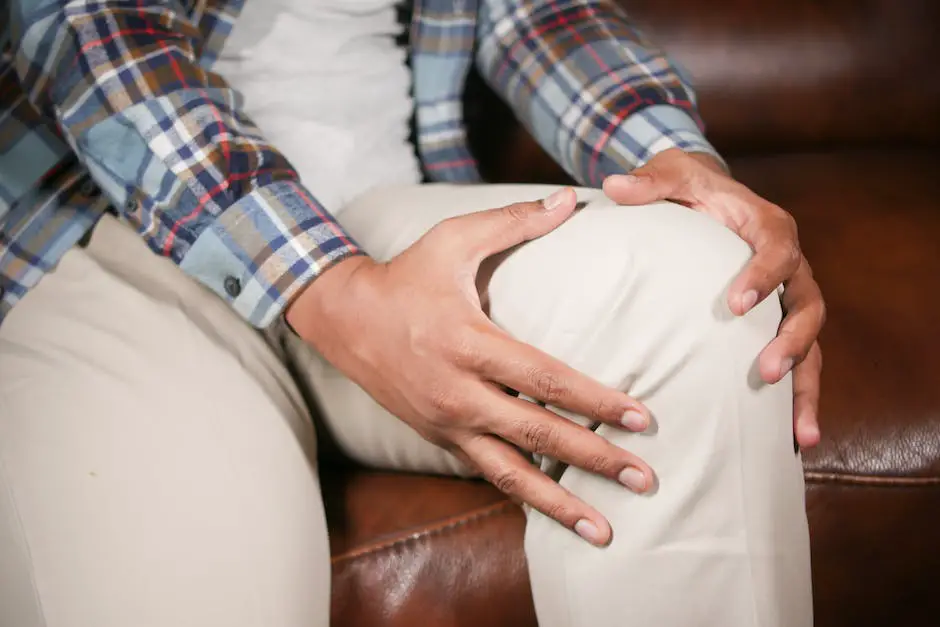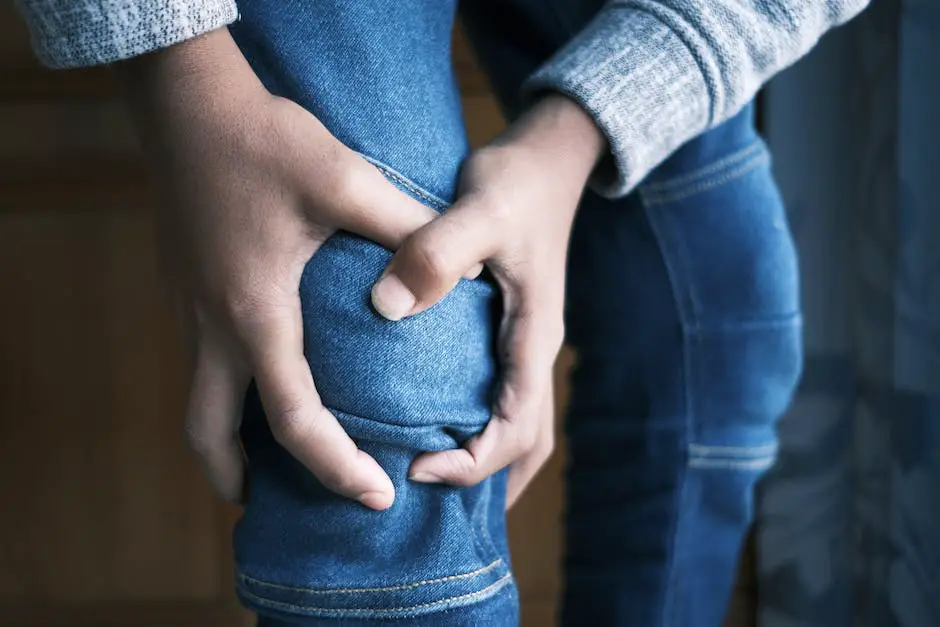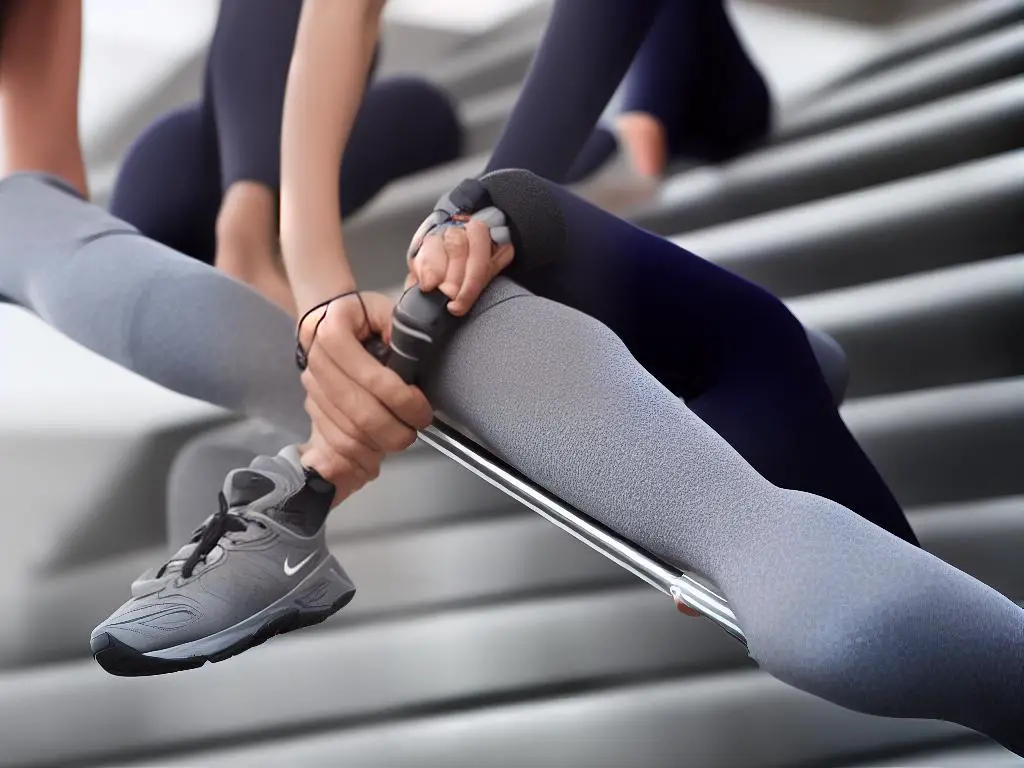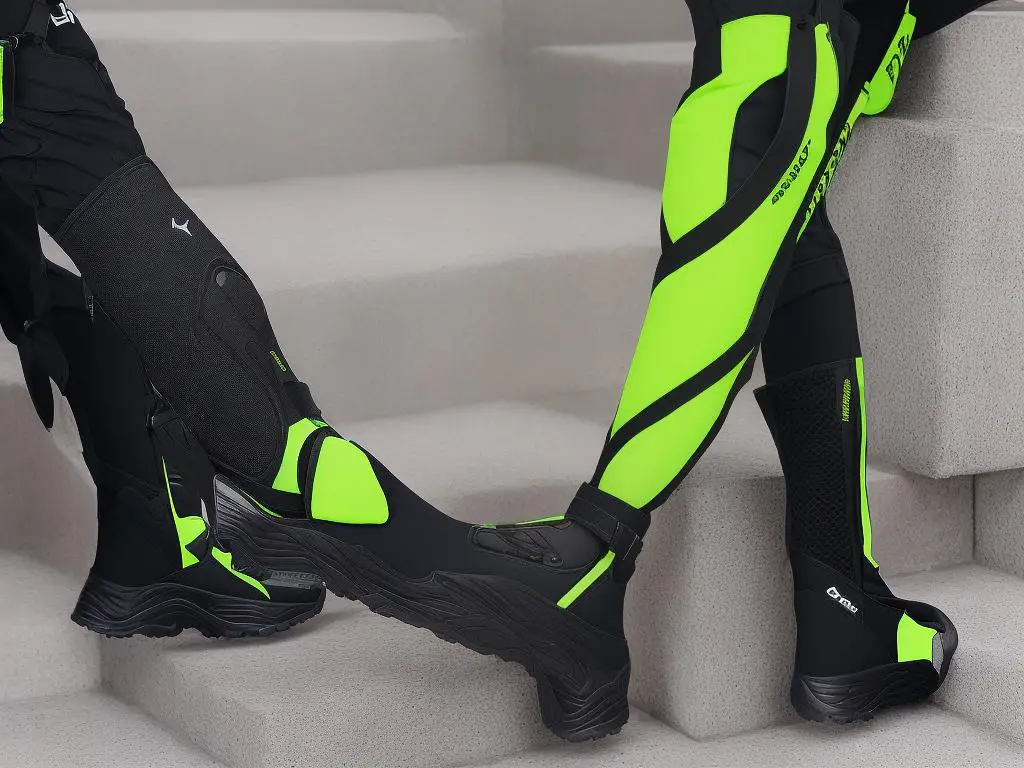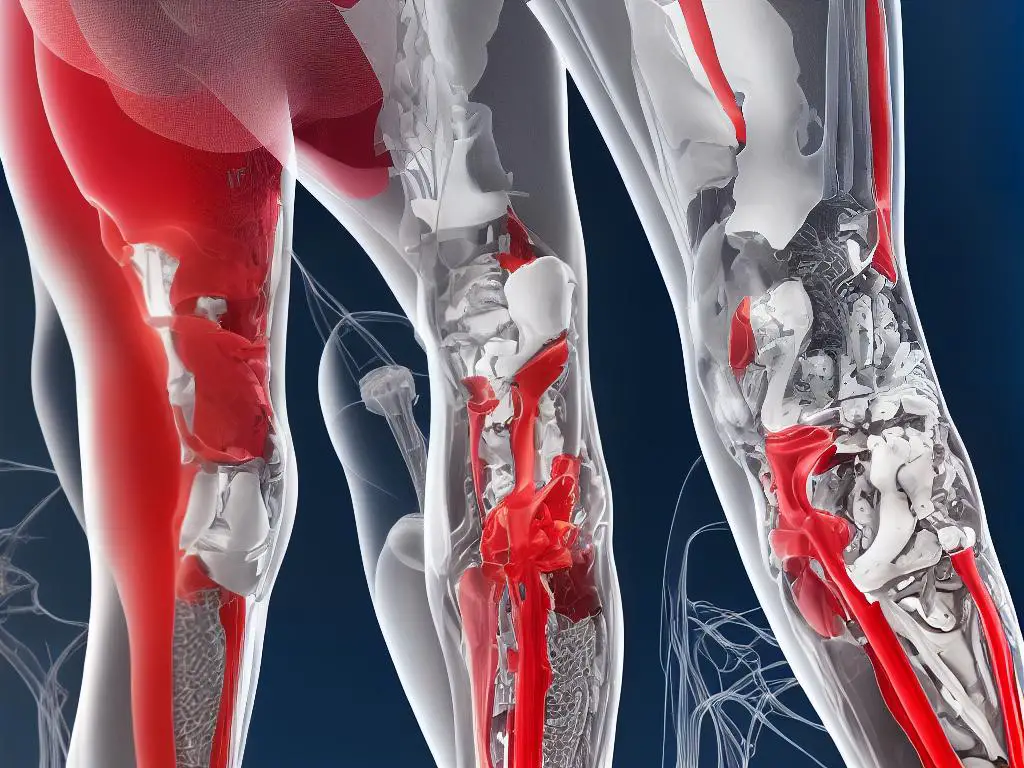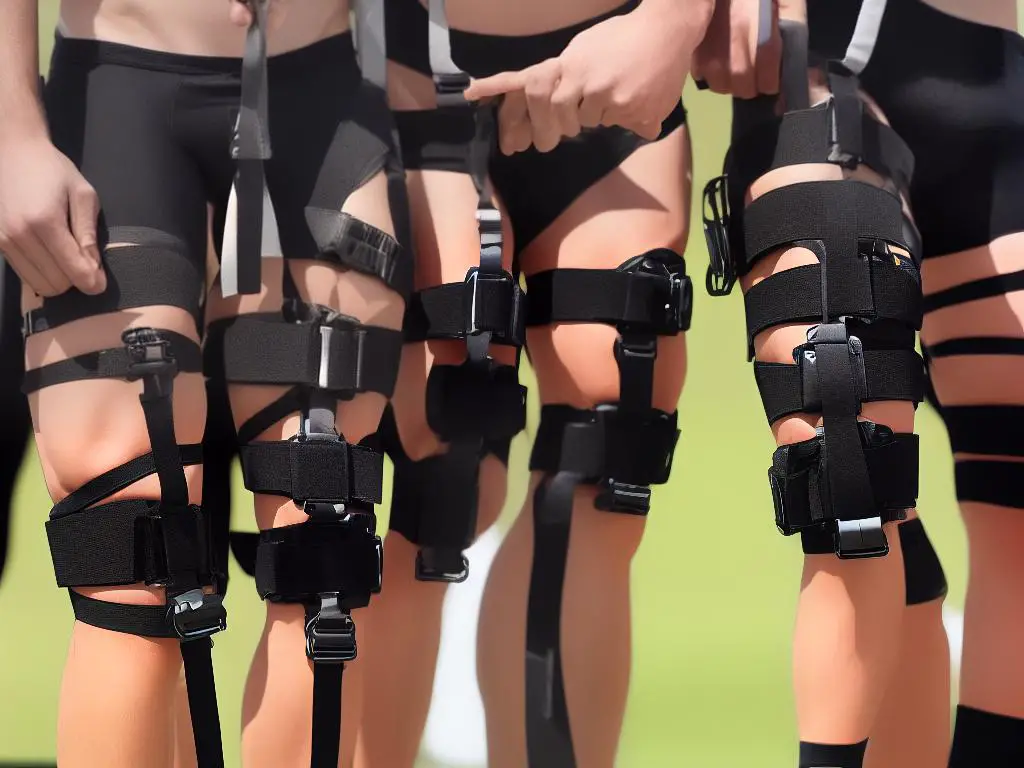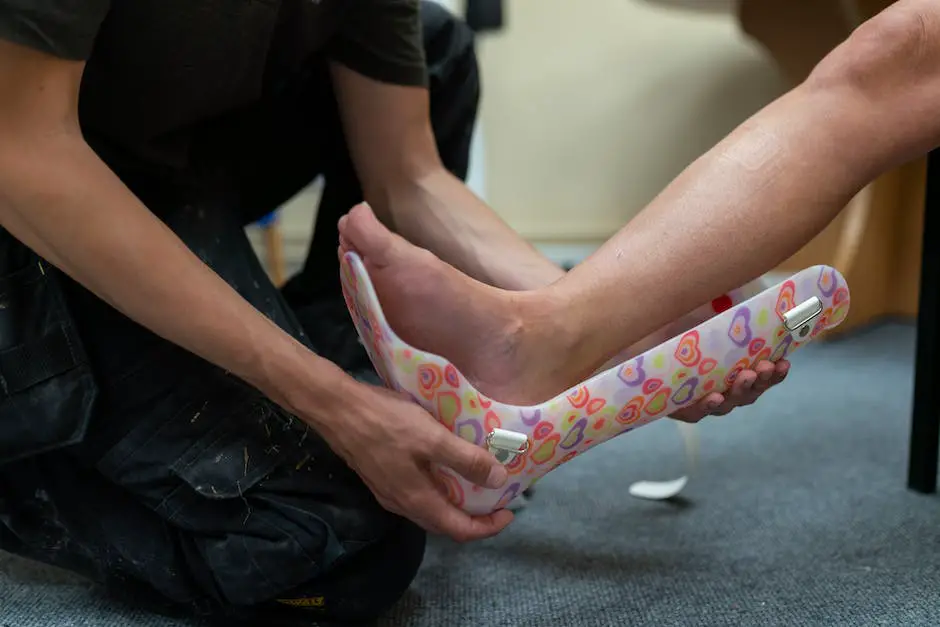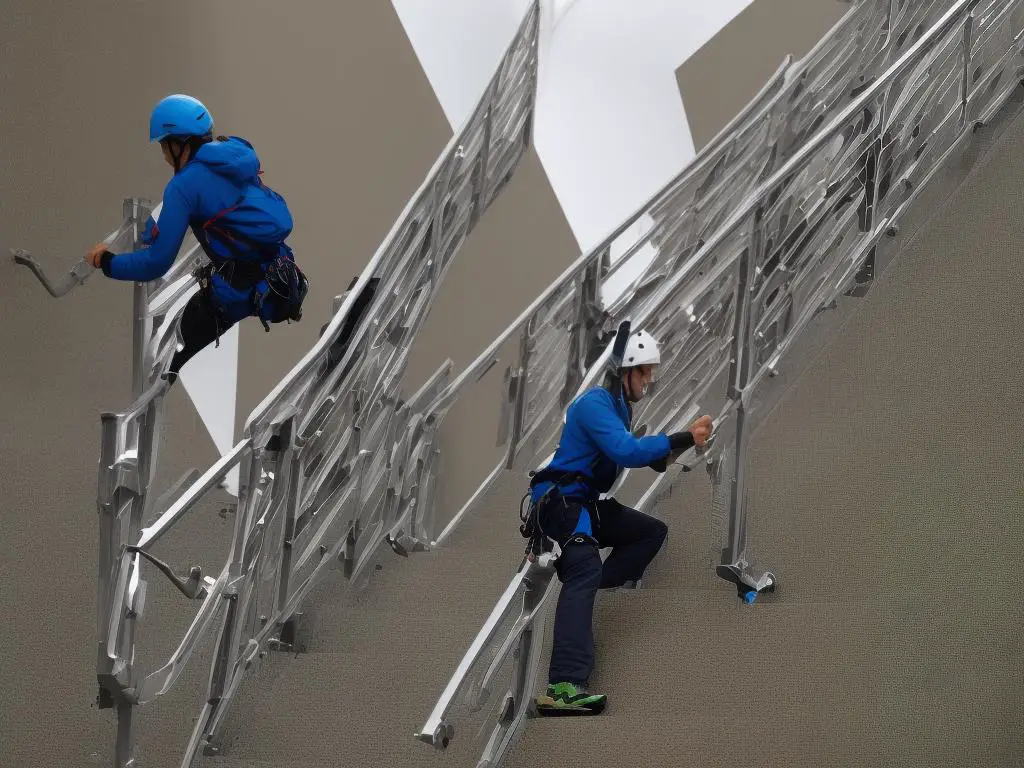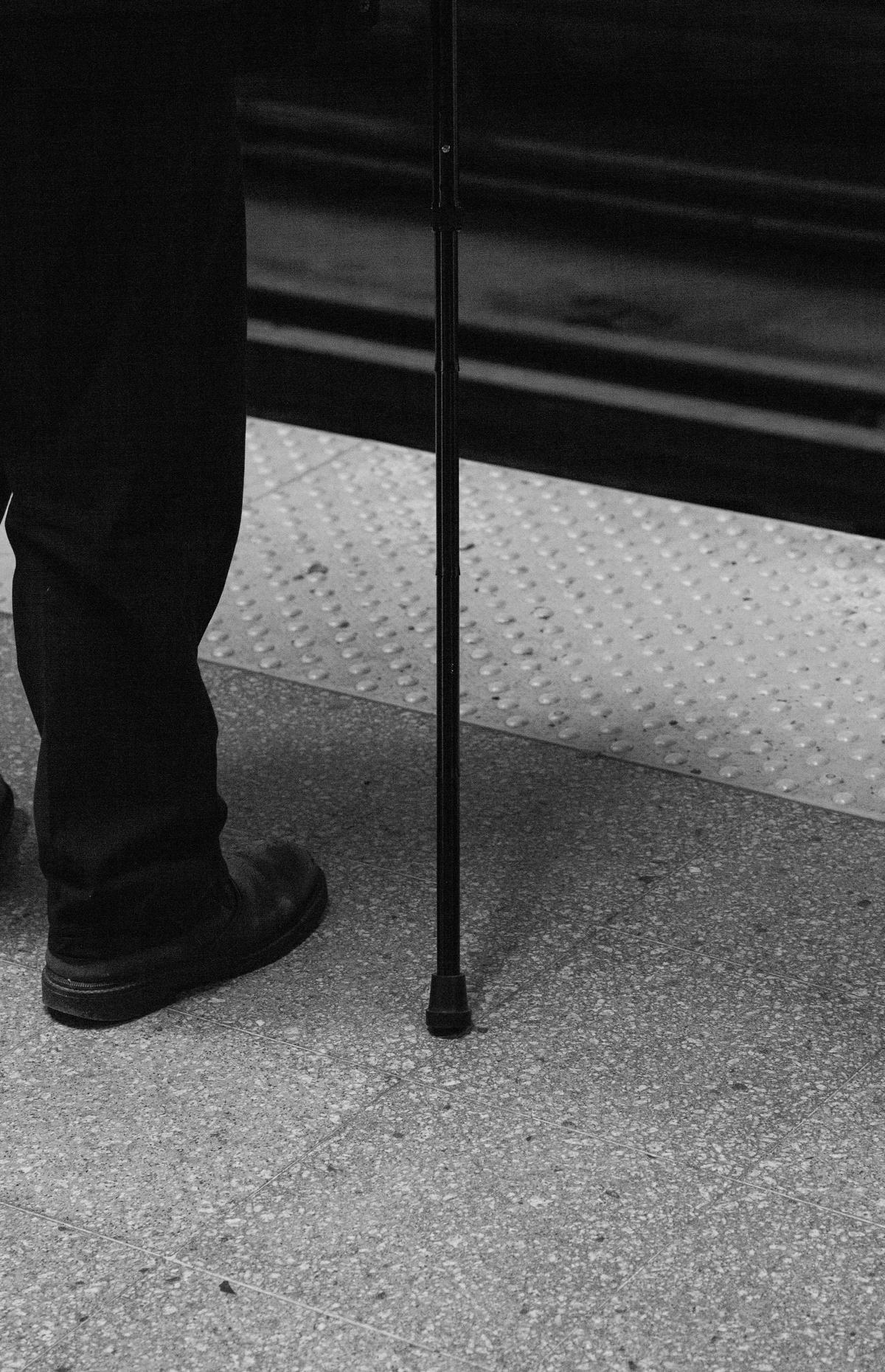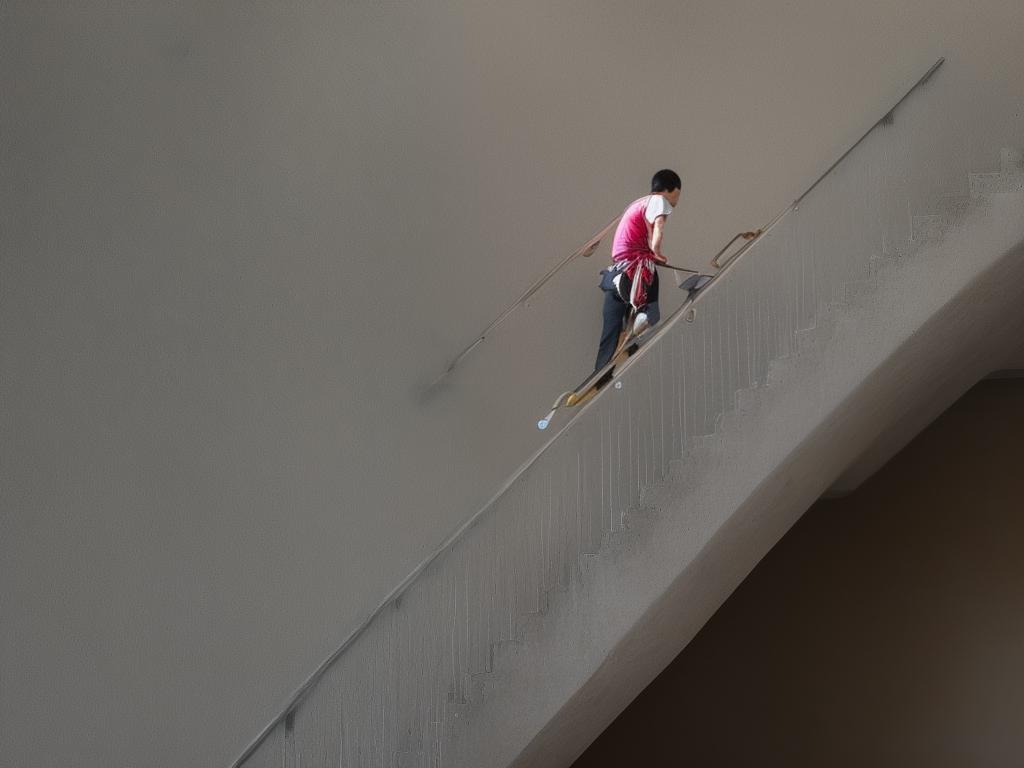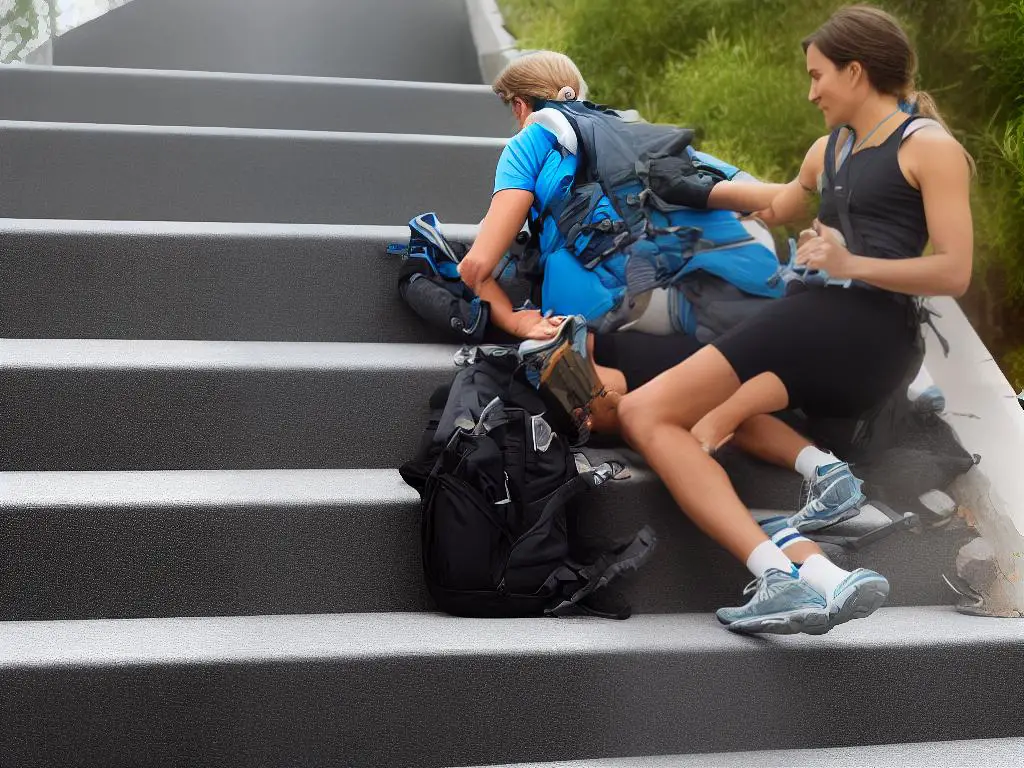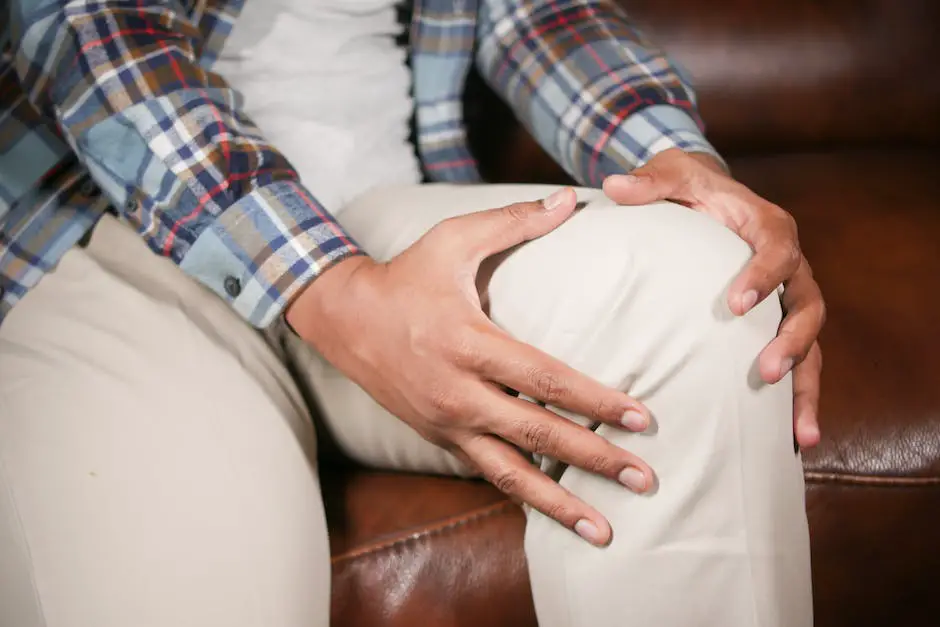For individuals seeking relief from knee pain or added stability while climbing stairs, utilizing knee support can be a game changer. With numerous types of knee supports available on the market, choosing the right one for your specific needs is essential. In this essay, you will discover the various types of knee supports, the materials and design elements that provide comfort and support, the benefits of using knee supports during stair climbing, and guidelines on how to select the right knee support for your needs. Additionally, we will be exploring top brands and products, showcasing those that are particularly effective for climbing stairs.
Types of Knee Supports
Types of Knee Supports
Knee support products come in various types, each catering to specific needs and preferences. When climbing stairs, having the right type of knee support is crucial to ensure maximum comfort and stability while minimizing the risk of injury. In this article, we will discuss various types of knee supports available, their pros and cons, and the suitability of each type when it comes to climbing stairs.
Knee Braces
Knee braces are rigid supports designed to stabilize and protect the knee joint, primarily used to prevent injury or recover from one. They are usually made from a combination of metal, plastic, foam, and/or elastic material to provide a stable framework around the knee. Depending on the severity of the condition, there are four main levels of knee braces:
- Prophylactic braces – These braces are used to prevent knee injuries and are often worn by athletes or active individuals.
- Functional braces – Designed to provide support to an already injured knee and recommended for those recovering from knee injuries, surgeries or experiencing joint instability.
- Rehabilitative braces – Typically prescribed post-surgery, these braces help protect the knee during the healing process by limiting movement and providing stability.
- Unloading/Offloading braces – These are specifically designed to relieve pressure on one side of the knee, often used by individuals with arthritis or other degenerative knee conditions.
Pros: Knee braces offer a high level of stability and support, allowing for a safer experience when climbing stairs. They can also help prevent re-injury in those recovering from a knee injury.
Cons: The rigid structure of knee braces can sometimes feel bulky and restrictive. In some cases, they may not provide the desired comfort level when climbing stairs.
Knee Sleeves
Knee sleeves are a less rigid form of knee support made from flexible, elastic materials such as neoprene or spandex. They provide compression and mild support to the knee joint, which helps with swelling, pain relief, and overall joint stability.
Pros: Knee sleeves allow for more flexibility and comfort when climbing stairs compared to knee braces. They are also lighter and less bulky, making them a popular choice for everyday wear.
Cons: Knee sleeves might not provide enough support for individuals with more severe knee conditions, or those recovering from surgery or serious injuries.
Knee Straps
Knee straps, also known as patellar straps, are designed to provide targeted support to the patellar tendon, which is crucial in the proper functioning of the knee joint. The strap is usually made from a durable material with an adjustable fastening mechanism, such as Velcro.
Pros: Knee straps can help reduce pain and pressure on the patellar tendon when climbing stairs. They are also lightweight and less noticeable compared to braces and sleeves.
Cons: Knee straps mainly target the patellar tendon and may not provide adequate support for those with other knee joint issues, such as ligament or cartilage damage.
Hinged Knee Supports
Hinged knee supports combine the benefits of knee braces and sleeves by incorporating metal hinges into a more flexible material. The hinges allow for a controlled range of motion, ensuring that the knee joint remains stable while still permitting natural movement.
Pros: Hinged knee supports offer a good balance of stability and flexibility, making them a suitable option for those looking for a more comfortable support while climbing stairs.
Cons: Hinged knee supports may not provide the same level of rigidity as traditional braces, potentially reducing their effectiveness in more severe cases. Additionally, they may still feel slightly more restrictive than sleeves or straps.
Choosing the Right Knee Support for Climbing Stairs
When seeking knee support for climbing stairs, it is important to consider the individual’s specific needs, comfort preferences, and the severity of their knee condition. A healthcare professional can provide appropriate guidance in choosing the best type of knee support based on individual requirements. In this article, we will explore various material considerations for knee support and how they impact overall support and comfort.

Material and Design Considerations
Material Considerations for Knee Support
As you search for the ideal knee support for stair climbing, a key factor to take into account is the materials used in knee braces. Materials can significantly influence the level of support and comfort provided. Common materials found in knee support products include neoprene, elastic, and fabric, each offering differing levels of support, flexibility, and comfort. By understanding the characteristics of these materials, you can make a well-informed decision about the best knee support for your needs.
Neoprene
Neoprene is a synthetic rubber material that is commonly used in knee supports because of its excellent balance of support, flexibility, and comfort. It is a durable material known for its ability to provide consistent compression and support without causing irritation or discomfort. Neoprene is also waterproof and thus is useful in situations where you might be exposed to moisture, such as during outdoor activities or exercise. One downside to neoprene knee supports is that they tend to retain heat and can cause excessive sweating, which may lead to discomfort over extended periods of use.
Elastic
Elastic is another common material used in knee supports, typically found in lighter, more flexible braces. Elastic knee supports provide a comfortable, snug fit that allows for a wide range of motion without sacrificing support. This makes them a popular choice for individuals who need mild to moderate support while participating in activities like stair climbing. However, elastic knee supports may not provide as much compression or support as neoprene or more rigid options and may lose their elasticity over time, requiring replacement.
Fabric
Fabric knee supports are often made from materials like cotton, polyester, or spandex and are designed to provide a breathable, lightweight option for individuals in need of mild support and compression. These knee supports are typically more comfortable and less bulky than neoprene or elastic options, making them more suitable for daily wear under clothing. However, fabric knee supports may not offer the same level of structured support as other materials and are sometimes not as durable.
Design Considerations for Knee Support
In addition to the materials used in knee supports, the design features of these products are crucial in providing the necessary support and comfort while climbing stairs.
Hinged or Rigid Design
Hinged or rigid knee supports are designed to provide a greater amount of structural support to individuals with more severe knee issues or for those engaging in activities that require intense knee movement, like stair climbing. These braces usually feature hinges or rigid reinforcements on either side of the knee, helping to stabilize the joint and prevent excessive lateral movement. However, these designs can be bulky and may restrict some movement, making them less suitable for those who only require mild support.
Compression Design
Compression knee supports utilize snug-fitting materials to apply constant pressure to the knee, helping to reduce inflammation and promote blood flow. These designs are popular among those in need of mild to moderate support, as they provide a comfortable level of compression without being overly restrictive or bulky. Compression knee supports can be particularly useful for individuals who experience knee discomfort or swelling related to stair climbing, as they can be worn throughout the day to aid in recovery.
Adjustable and Custom Fit Options
Many knee supports on the market come with adjustable straps or features that allow for a more customized fit, ensuring that the brace remains secure during activities like stair climbing. This is especially important for individuals whose knee sizes may change due to swelling or weight fluctuations, as a secure fit is crucial for proper support and comfort.
Tips for Choosing the Right Knee Support for Stair Climbing
When searching for the perfect knee support to help with climbing stairs, it is crucial to consider the materials and design features that will offer the comfort, support, and stability you require. Testing various options and seeking the guidance of medical professionals or physical therapists can ensure that you make the best decision for your specific needs. Additionally, it’s helpful to read reviews from users who have experience utilizing knee supports for stair climbing, as this can provide valuable insight into the real-life usability and effectiveness of the knee support.

Benefits of Knee Supports for Stair Climbing
Understanding the Benefits of Knee Supports for Stair Climbing
Knee pain and discomfort while climbing stairs is a common issue faced by adults, particularly as they age. This problem can often lead to decreased mobility, affecting daily activities. To help alleviate this issue, many individuals turn to knee supports for assistance. Knee supports can offer several advantages, such as pain relief, enhanced stability, injury prevention, and improved mobility, making them a valuable investment for those who struggle with stair climbing.
Pain Relief
Knee supports are designed to provide targeted compression around the knee joint, which can help soothe and alleviate pain. This compression not only aids in pain management but also stimulates blood flow to the affected area, speeding up the healing process and allowing for faster recovery from an injury. Furthermore, knee supports can also help to reduce inflammation and swelling, which are often the root causes of discomfort while climbing stairs.
Increased Stability
Climbing stairs requires a significant amount of coordination and balance, which can be especially challenging for those with weak or painful knees. Knee supports are designed to provide additional support to the knee joint, effectively increasing stability and minimizing the risk of falls or mishaps on the stairs. By wearing a knee support, users may feel more confident and secure in their movements while navigating staircases, ultimately leading to a greater sense of independence.
Injury Prevention
For individuals who suffer from chronic knee issues or those who are recovering from a knee injury, engaging in activities such as stair climbing can increase the likelihood of further damage. Knee supports help to minimize this risk by providing essential stabilization and support. They can also aid in maintaining proper knee alignment, preventing improper movements that could exacerbate existing conditions or lead to new injuries. By offering ample support during potentially strenuous activities like stair climbing, knee supports are an effective preventive measure for minimizing the risk of injury.
Improved Mobility
One of the key advantages of using knee supports is the improvement in overall mobility. By providing pain relief and increased stability, individuals are better able to move and navigate their surroundings with ease, including tackling staircases. This improved mobility enables users to maintain an active lifestyle, participate in daily activities, and maintain a higher quality of life, essential for overall well-being and health.
Introduction
Knee supports for stair climbing can be a game changer for adults experiencing knee pain or discomfort. These supports are designed to provide pain relief, increased stability, injury prevention, and improved mobility, ultimately enhancing quality of life for those with knee concerns. As each person’s needs and preferences may differ, it is crucial to research and consider reviews and testimonials from individuals with similar knee issues in order to find the right support for optimal stair climbing comfort. This guide will help explore the world of knee supports for better understanding and selection.

Fitting and Choosing the Right Knee Support
Understanding Knee Support
There is a wide variety of knee support products available on the market, with different sizes, designs, and materials meant to cater to individuals with various needs and physical conditions. Whether dealing with a knee injury, experiencing pain when climbing stairs, or in need of extra support during daily activities, finding the right knee support is essential for improving your condition and preventing further harm. This guide aims to walk you through fitting and choosing the appropriate knee support for your specific needs, to ensure the smoothest and most comfortable stair climbing experience possible.
Measuring Your Knee Size
To find the correct size of the knee support, start by measuring the circumference of your leg at three points: 4 inches (10 cm) above the knee, directly around the kneecap, and 4 inches (10 cm) below the kneecap. Use a flexible, non-stretching measuring tape for accurate measurements. Note these measurements to compare to the sizing charts provided by the knee support manufacturers. Keep in mind that sizing may vary between brands, so always refer to the specific sizing chart to find your perfect fit.
Identifying the Level of Support
Knee support products are typically classified into three main categories based on the level of support they provide: basic, advanced, and elite.
- Basic Support: Provides gentle compression and warmth, ideal for minor pain, swelling, and stiffness. Suitable for individuals with mild knee discomfort during normal daily activities like climbing stairs.
- Advanced Support: Offers moderate compression, stability, and joint alignment, often featuring additional adjustable straps for customized fit and support. Recommended for individuals with moderate knee discomfort, sprains, or instability during activities.
- Elite Support: Provides maximum support, stability, and protection for individuals with severe knee conditions, major injuries, or those in need of the highest level of support during rigorous activities, sports, or training.
Consider the intensity of your pain or discomfort and your planned activities when selecting the appropriate support level.
Support Material and Design
Knee supports come in various materials, ranging from soft, elastic fabrics like neoprene or spandex to more rigid, supportive materials like various plastics or metals. Soft, elastic materials provide mild to moderate compression and warmth, helping to alleviate pain, reduce swelling, and improve stability. Rigid materials provide increased structure and stability, often featuring hinges, adjustable straps, and stays for better joint alignment and support.
When choosing the right design, consider factors such as breathability, flexibility, and comfort. For example, a sleeve-style knee support might provide better breathability and flexibility than a wrap-style brace but might not offer the same level of stability and adjustability.
Consult a Medical Professional
While considering various factors in choosing the right knee support, it’s essential to consult with a healthcare professional, such as a physical therapist or orthopedist, to discuss your specific needs and concerns related to your knee condition. They may recommend a specific type of knee support, and you can use the information provided in this guide to find a suitable fit based on these recommendations.
In order to find the right knee support for your needs, it is essential to carefully consider factors such as your knee measurements, desired support level, material preferences, and product design, as well as any recommendations from a medical professional. By taking the time to properly fit and select the appropriate knee support, you can experience improved comfort and support when climbing stairs and engaging in other activities.

Top Knee Support Brands and Products
An Overview of Knee Support for Climbing Stairs
Knee support products are specifically designed to alleviate pain, prevent injuries, and provide additional support and stability for various physical activities, including climbing stairs. Stair climbing can cause strain and stress on the knee joints, making it essential to find the right knee support to ensure comfort and safety. In this comprehensive review, we will discuss some of the top knee support brands and their products, focusing on their effectiveness, durability, and suitability for climbing stairs.
Bauerfeind Sports Knee Support
Bauerfeind is a German company known for its high-quality medical and sports products. Their Sports Knee Support is highly rated among users, featuring a medically engineered design and Air Knit Fabric technology for breathability. The support incorporates a viscoelastic pad that massages and stimulates the surrounding muscles, effectively reducing pain and enhancing joint stability while climbing stairs. With an anatomically shaped fit and a lightweight, durable material, Bauerfeind’s knee support is a top choice for stair-climbing enthusiasts.
McDavid Knee Support
McDavid is a well-respected brand in sports protection and performance apparel. Their knee support products, such as the 422 Dual Disk Hinged Knee Brace, are designed to stabilize weak or injured knees while providing compression and support. Specifically, this brace features bilateral hinges for improved lateral stability, making it ideal for climbing stairs. The neoprene material offers consistent compression, ensuring an accurate fit and comfortable support during activities. Additionally, McDavid’s products come with varying levels of support (basic, advanced, and maximum), catering to different individual needs.
DonJoy Performance Bionic Knee Brace
DonJoy is a leading brand in orthopedic and sports medicine products and their Performance Bionic Knee Brace is a popular choice for those looking to enhance their knee support. This product is engineered with an asymmetrical stretch webbing construction, allowing for a personalized fit and targeted compression zones. The brace features an oversized hinge for increased stability, ideal for people who regularly climb stairs. Completed with odor-resistant and quick-dry technology, DonJoy’s Bionic Knee Brace offers comfortable support during any physical activity.
Shock Doctor Knee Support
Shock Doctor is a renowned brand in the knee support industry, with a focus on producing protective and performance-enhancing gear. Their Ultra Knee Support with Bilateral Hinges provides robust knee support for stair climbing. The product features a pre-curved anatomical design, ensuring a comfortable fit during movement. The brace employs tempered aluminum stays and bilateral hinges to deliver enhanced stability and support to the knee joint, making it ideal for activities involving stair climbing. The moisture-wicking, antimicrobial material keeps the brace fresh and odor-free, heightening overall comfort.
Bracoo Knee Support
Bracoo is a brand that offers affordable and effective knee support products. Their Adjustable Compression Knee Support is designed to provide customized compression and support during various physical activities like stair climbing. The open-patella design relieves pressure on the knee cap, allowing for better flexibility in movement. The three adjustable straps ensure a tailored fit and help to reduce slipping during movement. The breathable neoprene material ensures a comfortable support experience, making Bracoo’s knee support an excellent entry-level option for those in need of additional stability during stair climbing.
Conclusion
Whether you’re a professional athlete or someone who wants some extra support for climbing stairs, finding the right knee support product is essential. The top brands discussed, such as Bauerfeind, McDavid, DonJoy, Shock Doctor, and Bracoo, provide various options to suit different needs and preferences. From lightweight and breathable designs to more rigid support systems, these products cater to different levels of needs and requirements. Identifying the right product based on your individual needs will result in better joint stability, reduced pain, and increased confidence in activities involving stair climbing.

Ultimately, the decision to invest in knee support can significantly improve an individual’s experience when climbing stairs. By understanding the various types of knee supports, their material and design considerations, and their overall benefits, individuals can confidently make an informed decision when selecting the right knee support for their needs. Furthermore, taking the time to properly fit and choose a knee support, as well as considering reliable brands and products, will help ensure a more comfortable and secure stair-climbing experience, ultimately promoting better overall knee health and mobility.


